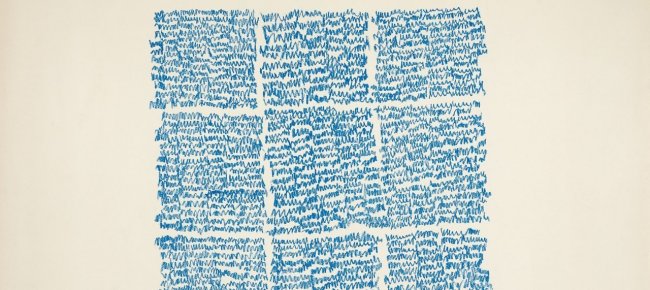laregione.ch/culture/arte/1500558/villa-cedri-mostra-irma-blank-parole-linguaggio
Archivi tag: scrittura asemica
telegram asemic channel / canale telegram di scrittura asemica
 a Telegram channel for ASEMIC writing stuff & news has born.
a Telegram channel for ASEMIC writing stuff & news has born.
join if you want: https://t.me/asemic
è nato un canale Telegram per materiali e aggiornamenti legati alla scrittura asemica. chi vuole si unisca: https://t.me/asemic
un discorso chiuso / differx. 2021
alcune tappe storico-interpretative dell’arte asemica e poetico-visiva + un esperimento / a cura di antonio francesco perozzi
 Alcune tappe storico-interpretative dell’arte asemica e poetico-visiva + un esperimento
Alcune tappe storico-interpretative dell’arte asemica e poetico-visiva + un esperimento
a cura di
Antonio Francesco Perozzi
pdf liberamente scaricabile all’indirizzo
https://slowforward.files.wordpress.com/2021/03/alcune-tappe-dellarte-asemica_-afperozzi.pdf
alias
https://tinyurl.com/DellArteAsemica-AFPerozzi
_
oggi su antinomie: “sei trame asemiche”, di ada de pirro
Ada De Pirro sulla pratica dell’asemic writing:
Francesca Biasetton, Laura Cingolani, Mariangela Guatteri,
Floriana Rigo, Tommasina Bianca Squadrito, Martina Stella
antinomie.it/index.php/2021/03/08/sei-trame-asemiche/
_
federico federici: “transcripts from demagnetized tapes” (2021)
 Transcripts from demagnetized tapes, Vol. 1, foreword by Sloan De Villo, LN 2021, ISBN 979-8688757347 [Asemic-Concrete-Eng]
Transcripts from demagnetized tapes, Vol. 1, foreword by Sloan De Villo, LN 2021, ISBN 979-8688757347 [Asemic-Concrete-Eng]
sibilla asemantica / differx. 2008
glyphicle / differx. 2012-13
 glyphicle
glyphicle
(CC) 2012-13 differx
[GIF published in The New Postliterate]
thenewpostliterate.blogspot.com/2013/07/glyphicle-from-marco-giovenale.html
=
3.bp.blogspot.com/-Fi6bWiMmacc/UeLjVMwbwJI/AAAAAAAAGOE/PjyeTUFFqew/s1600/glyphicle.gif
[and in Antipodes:]
antipodes.org.au/en.pure_concept_06.html
=
antipodes.org.au/Photo/glyphicle_B_00.gif
asemic draft 222 / differx. 2011
euo210119 / miron tee. 2021




